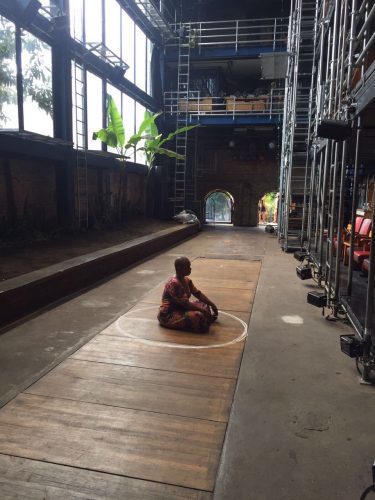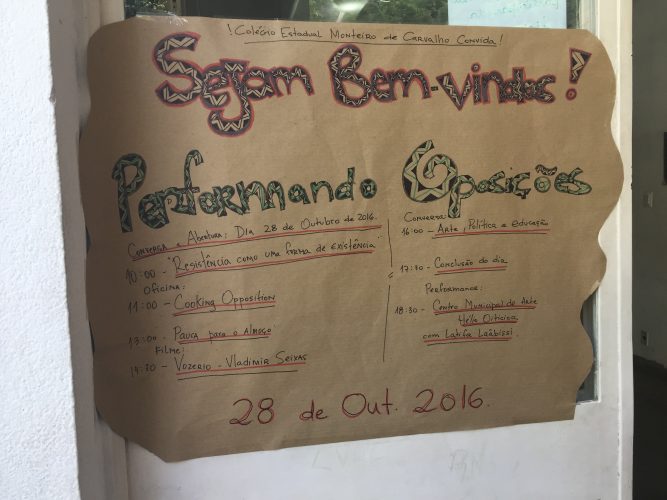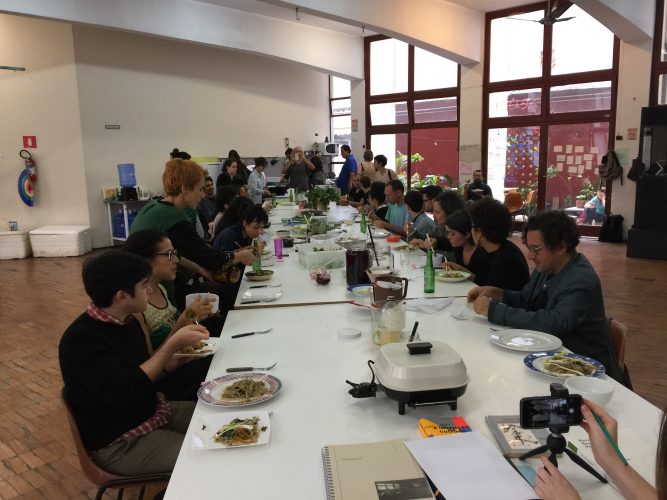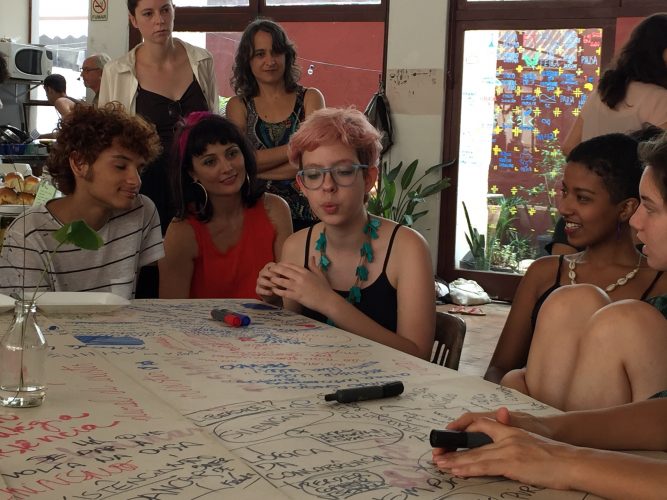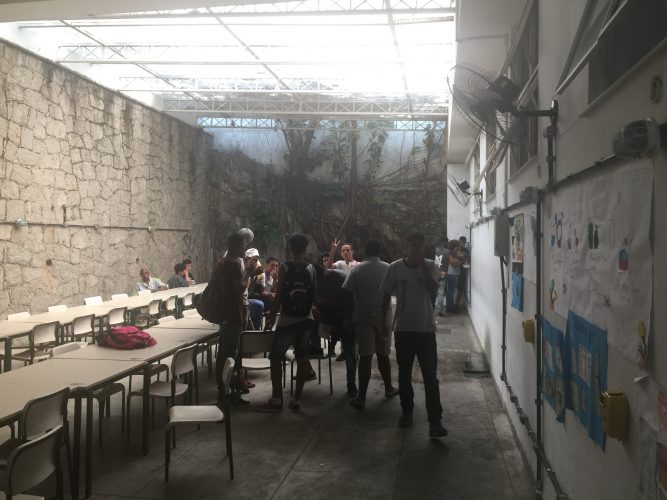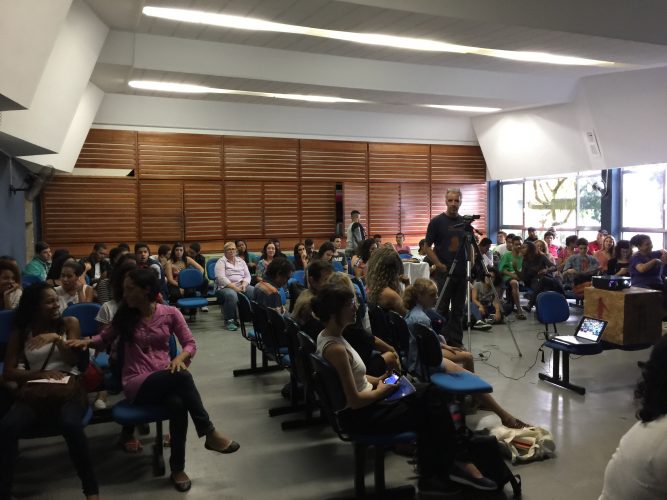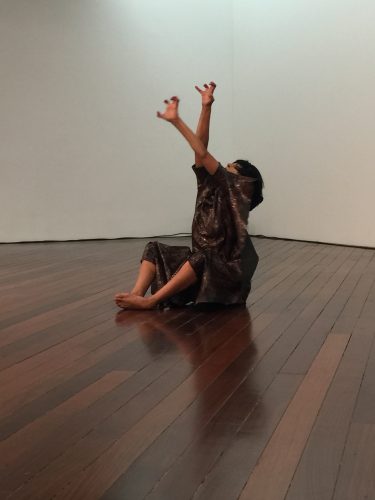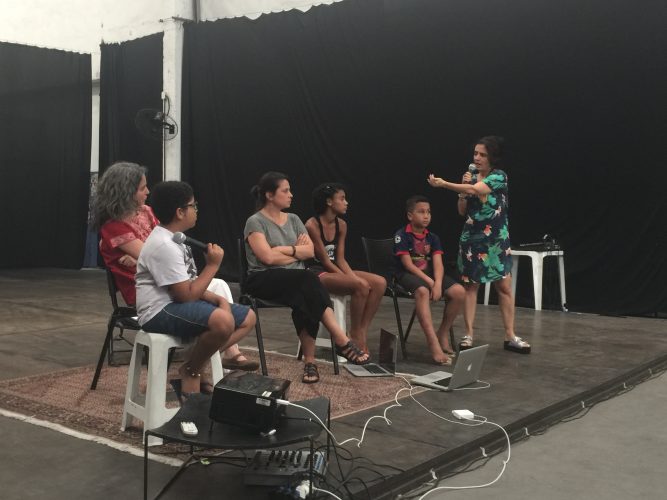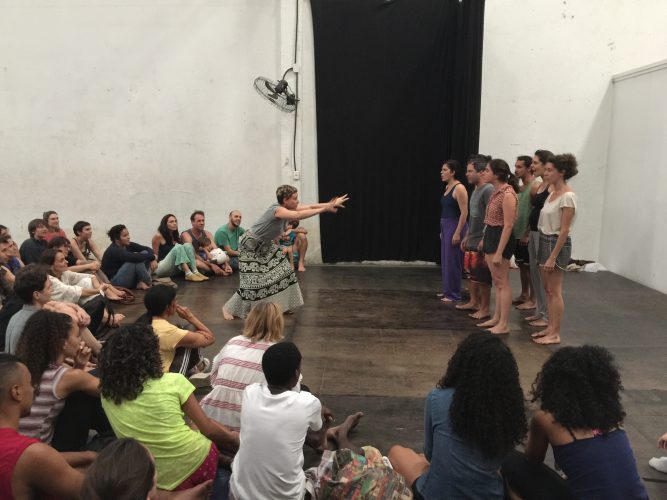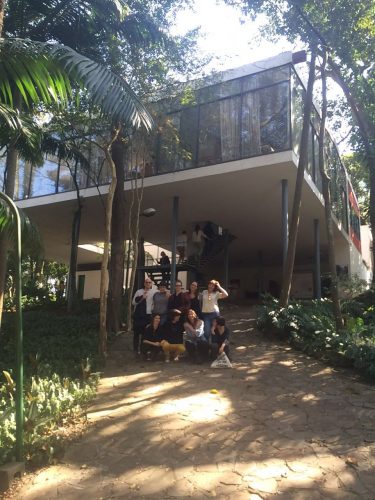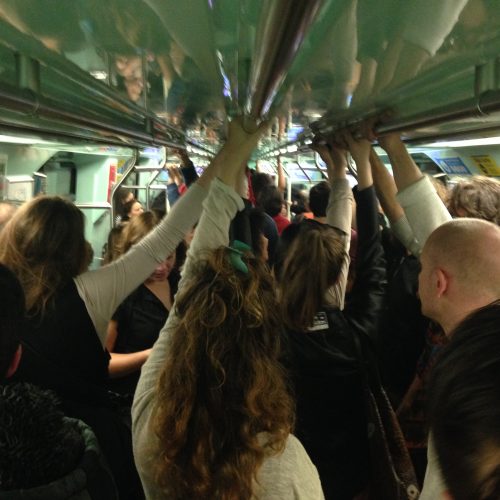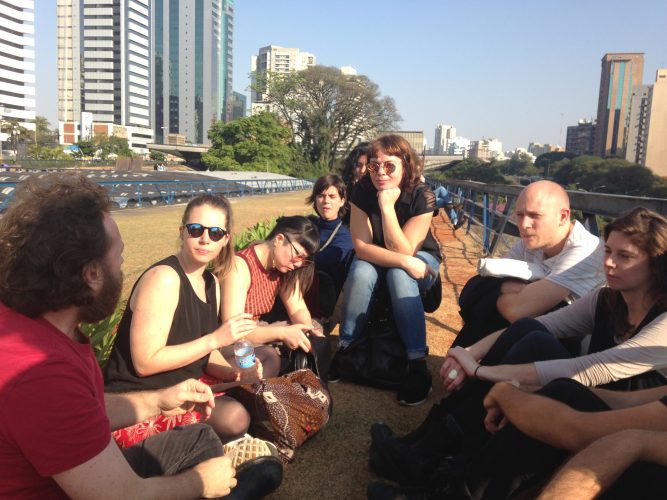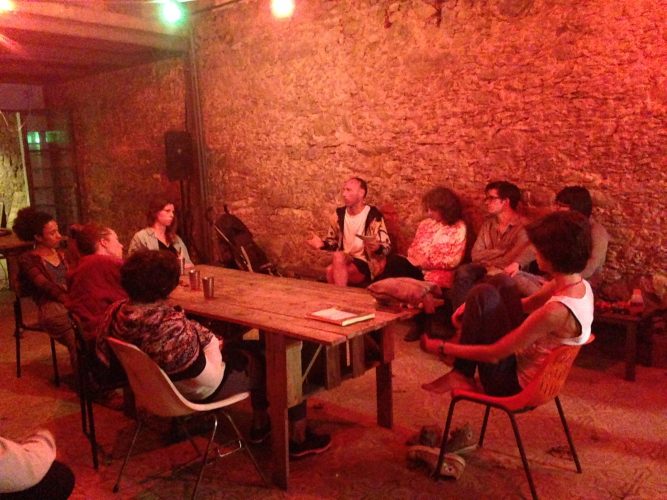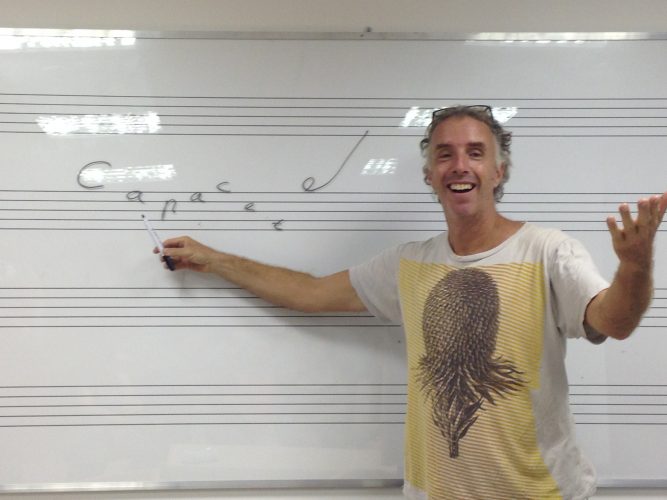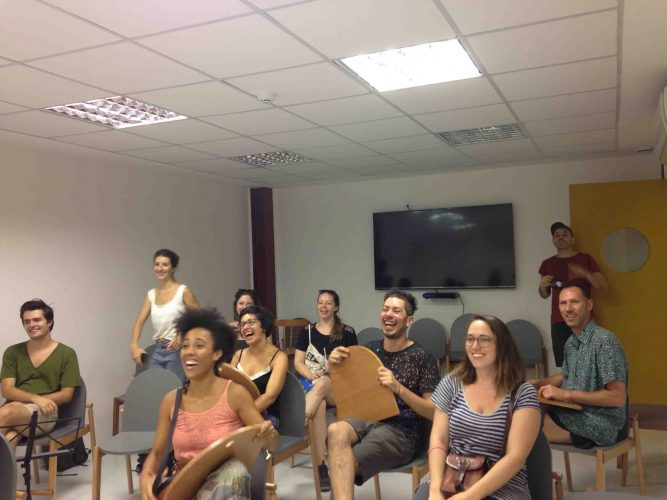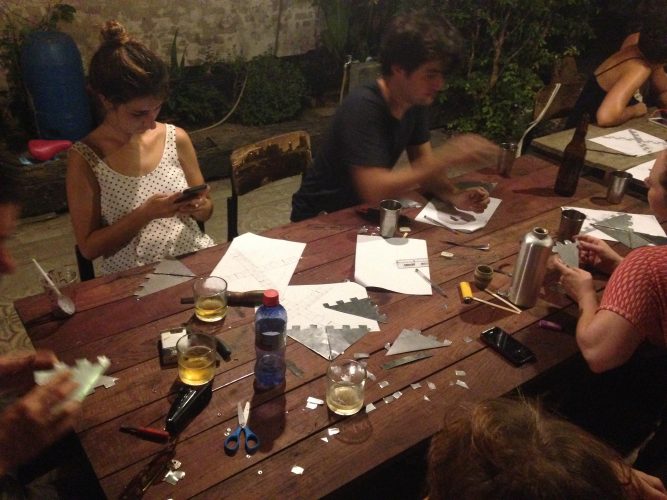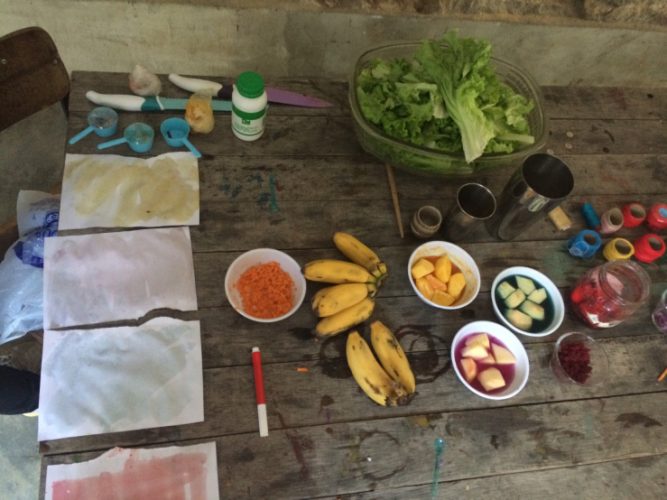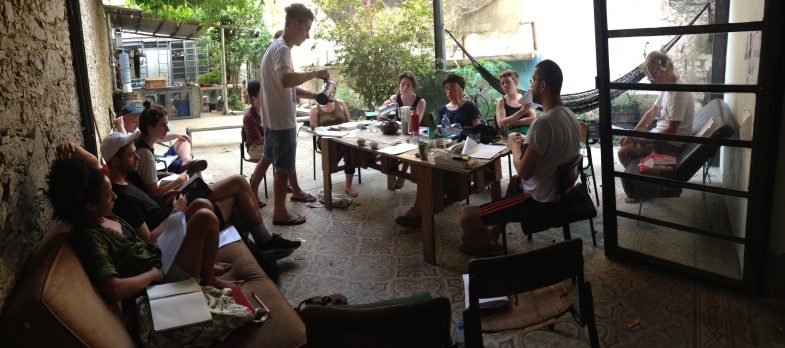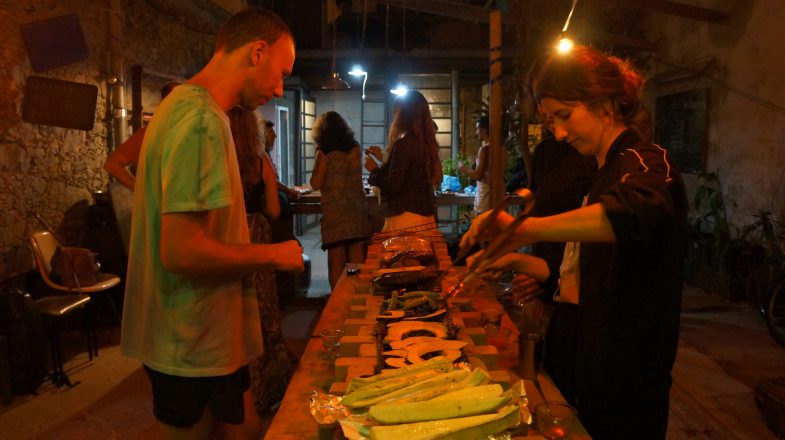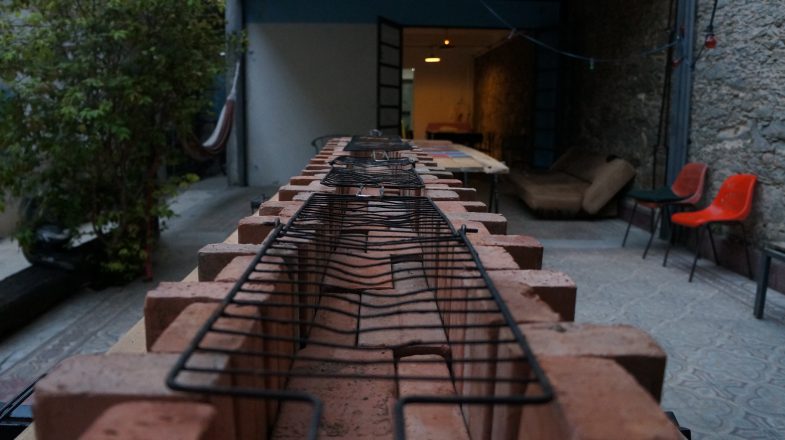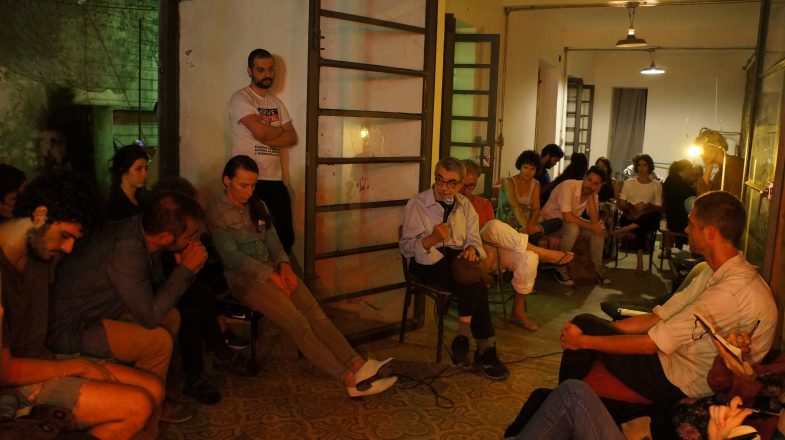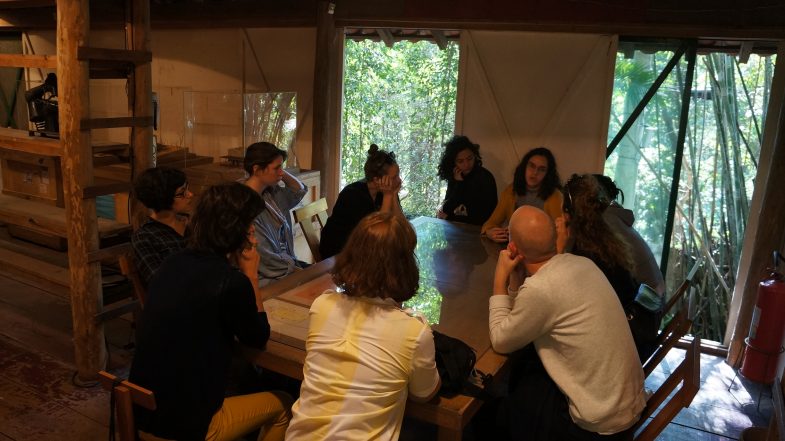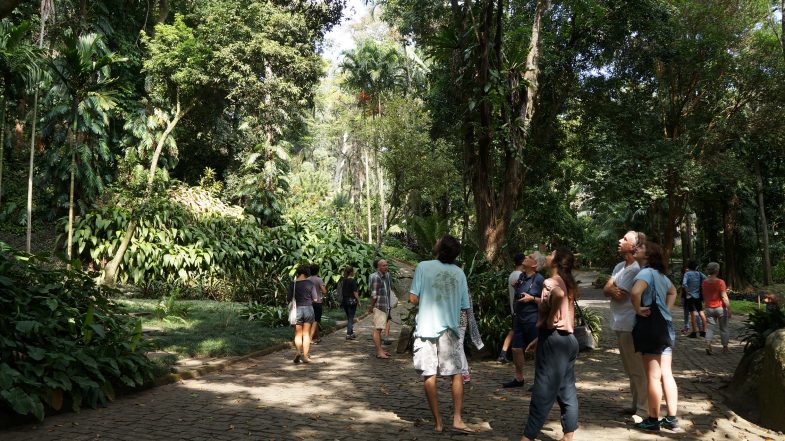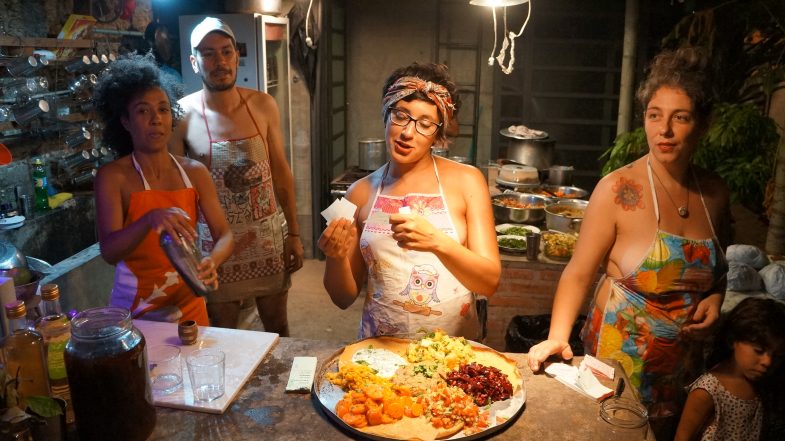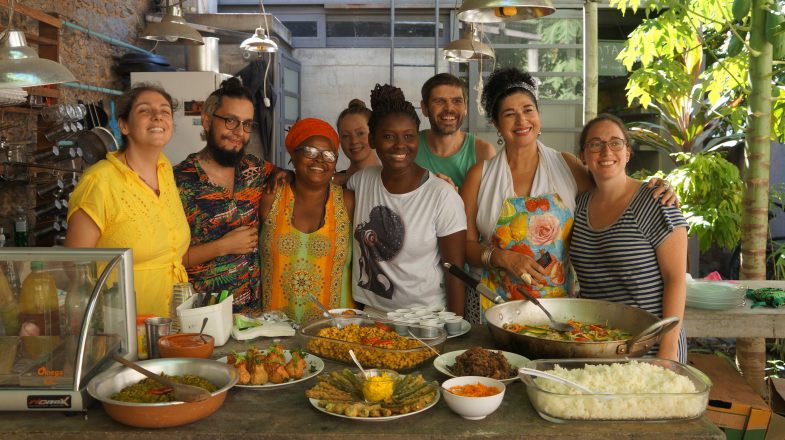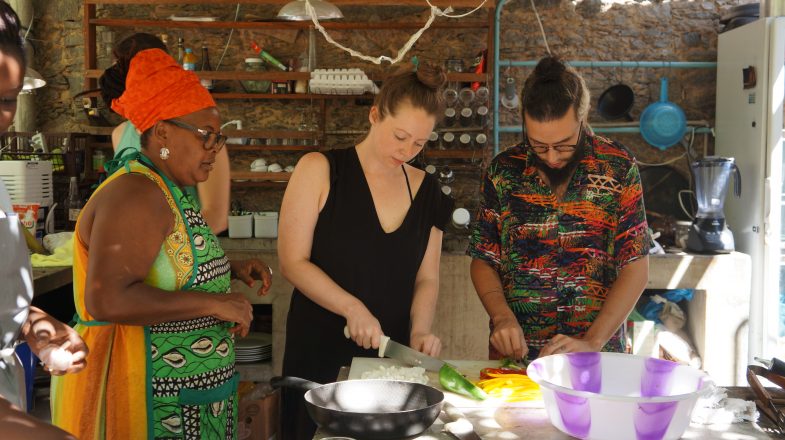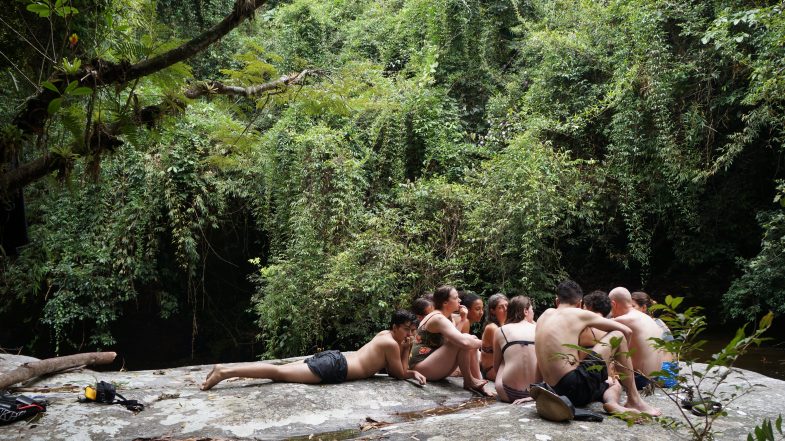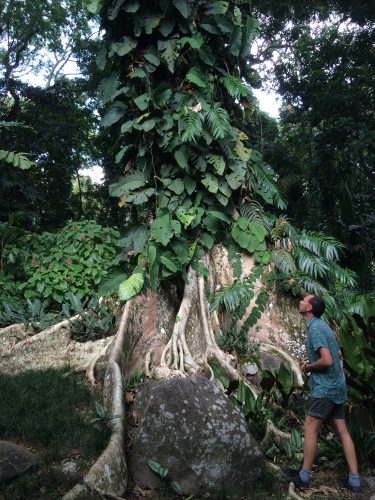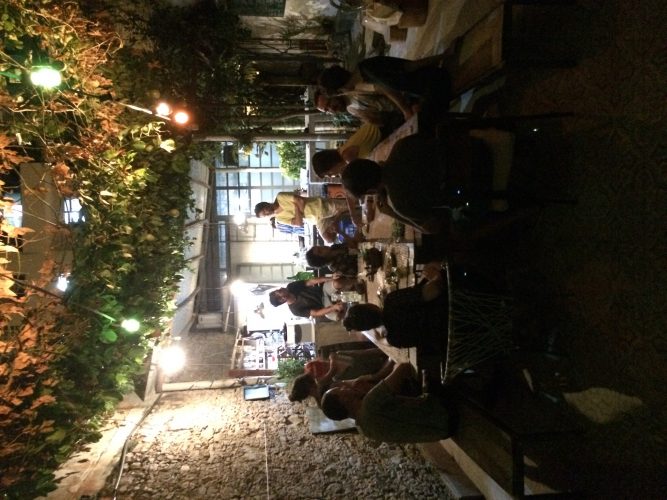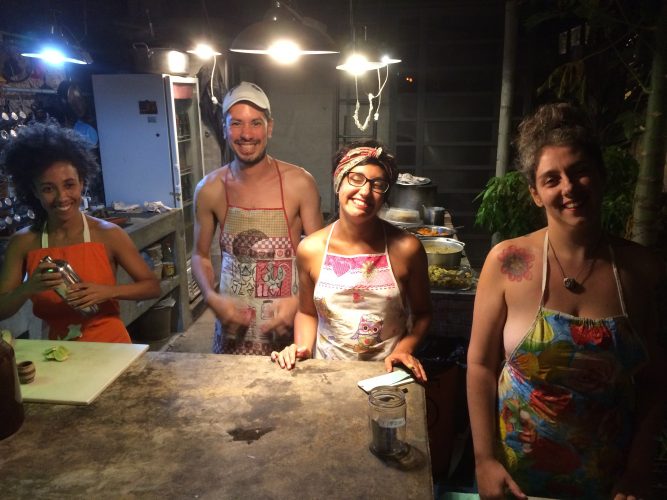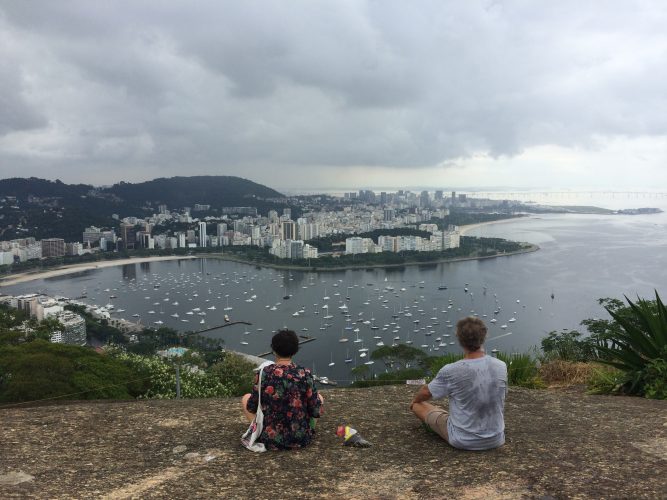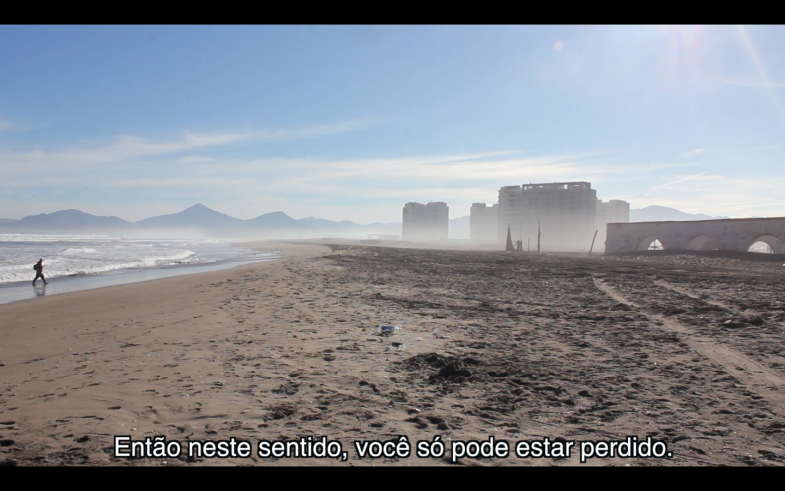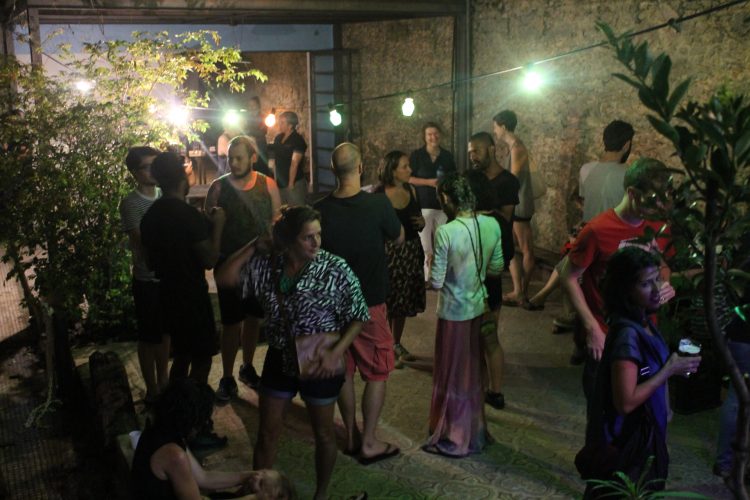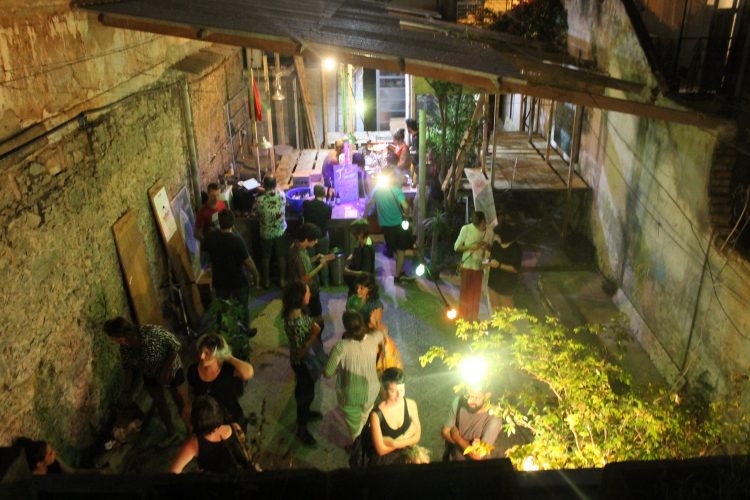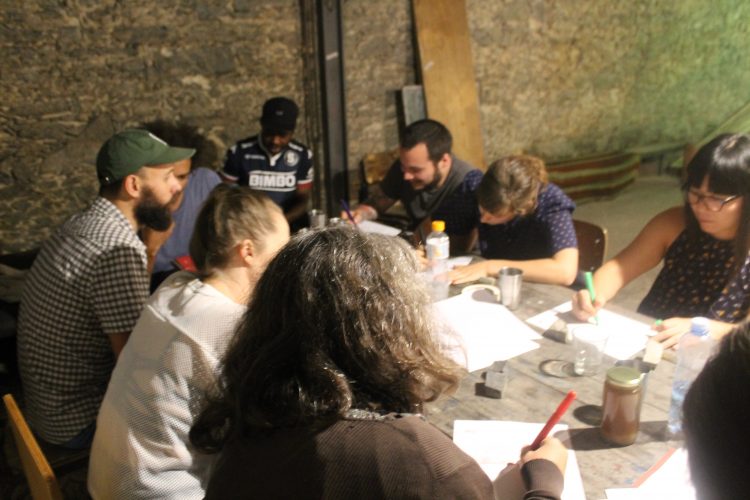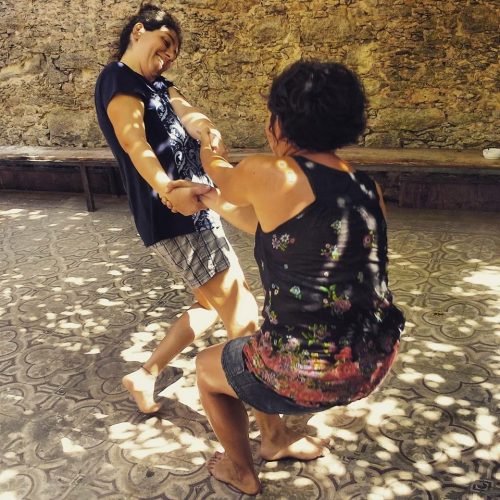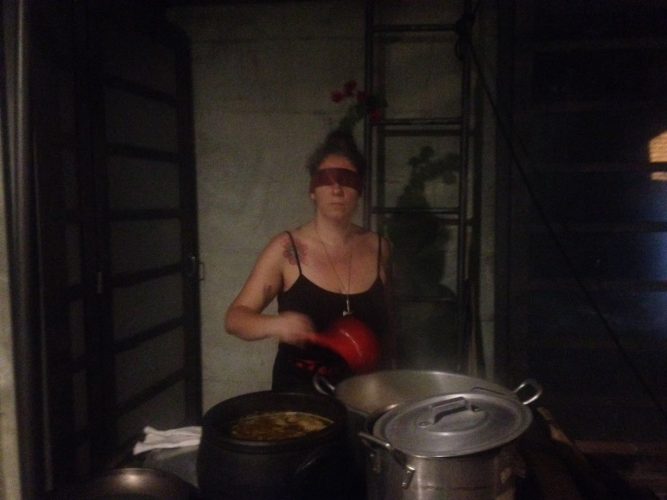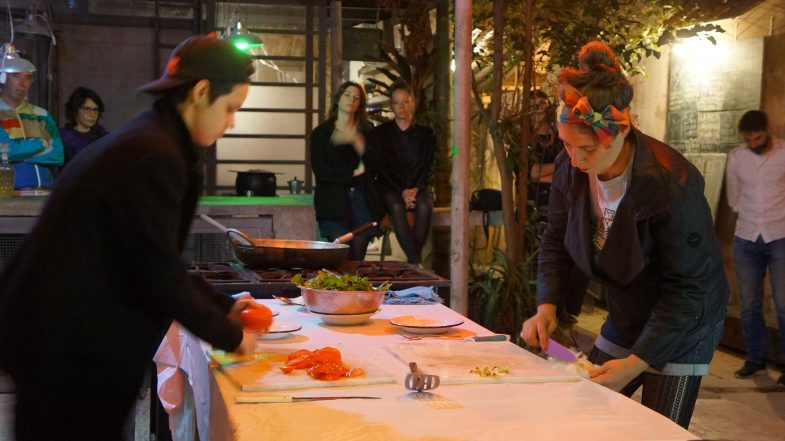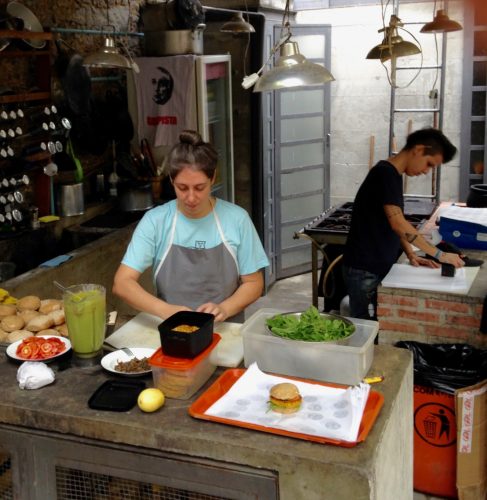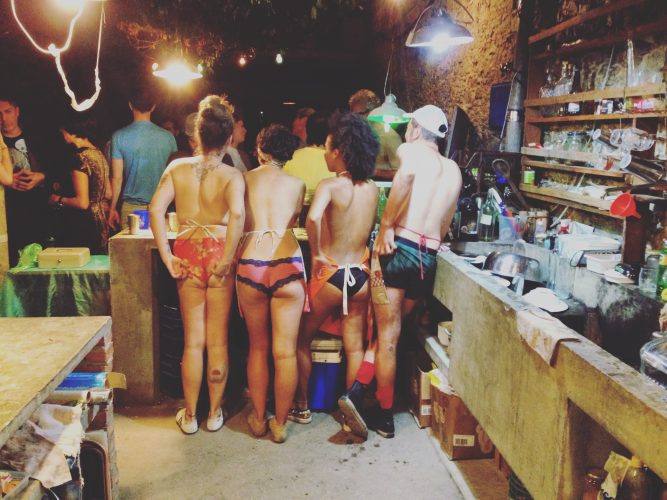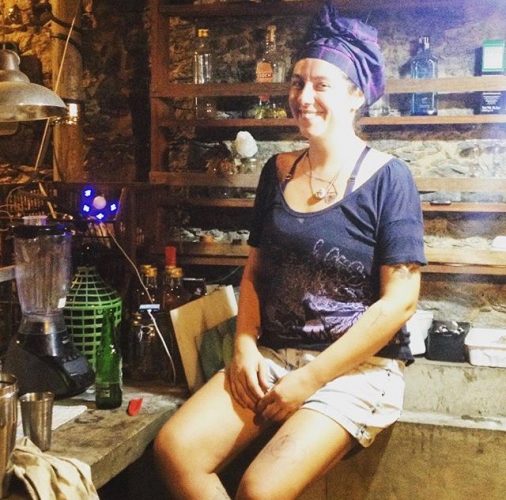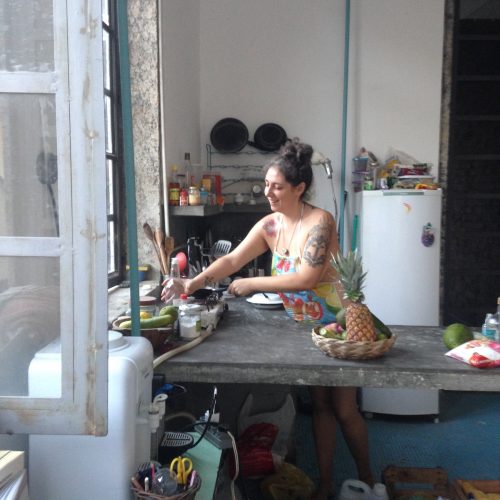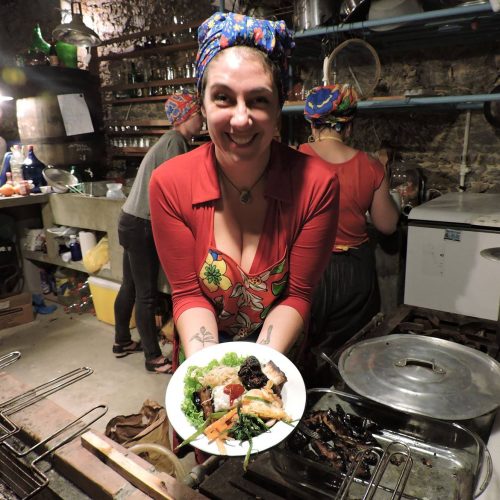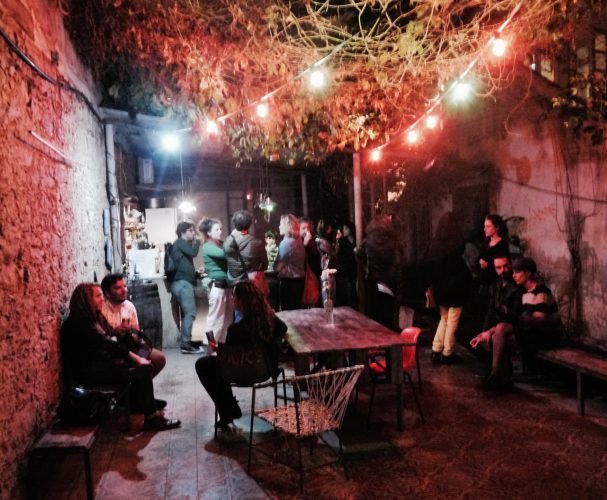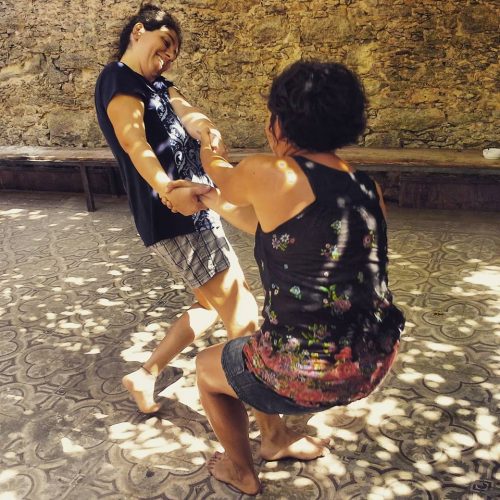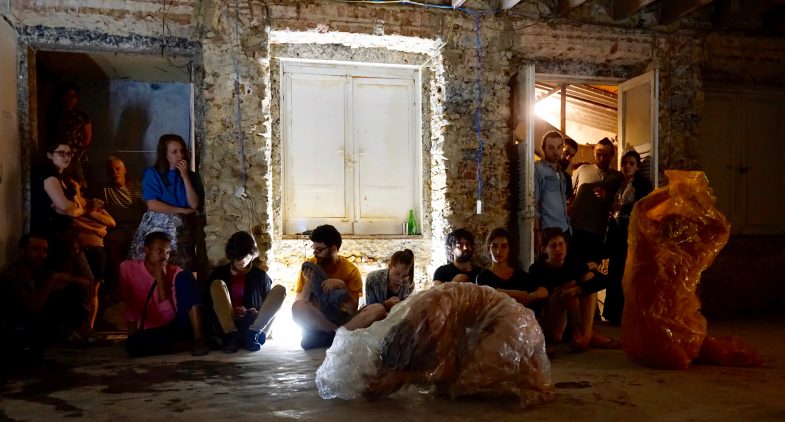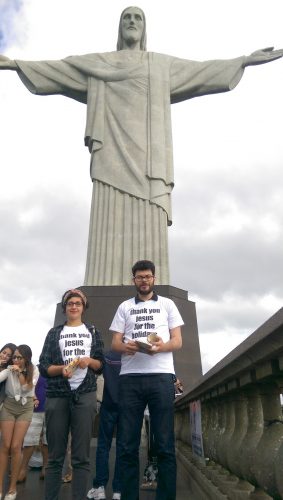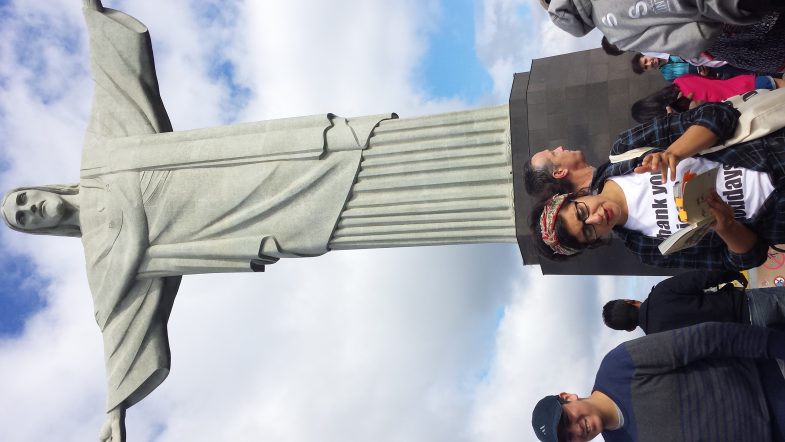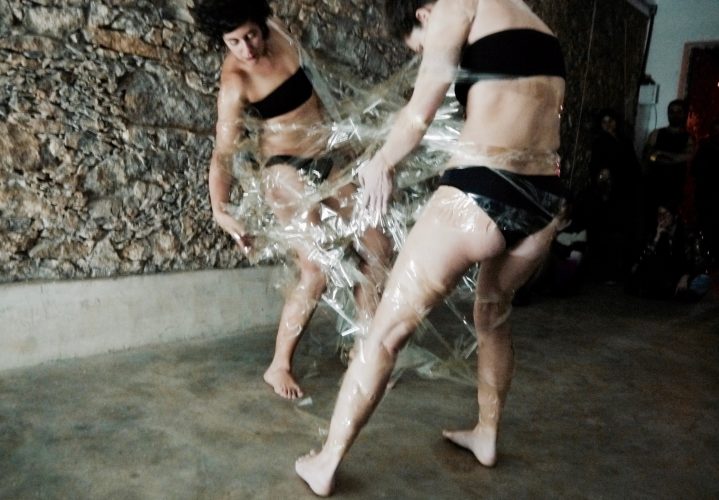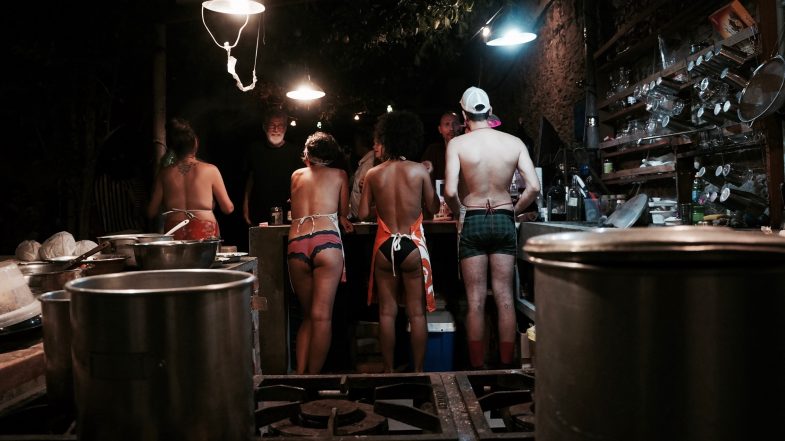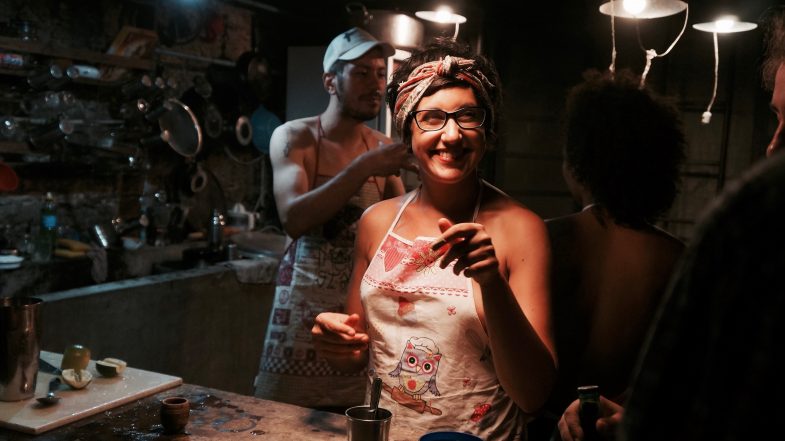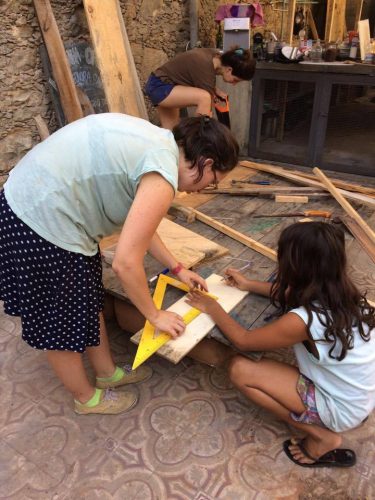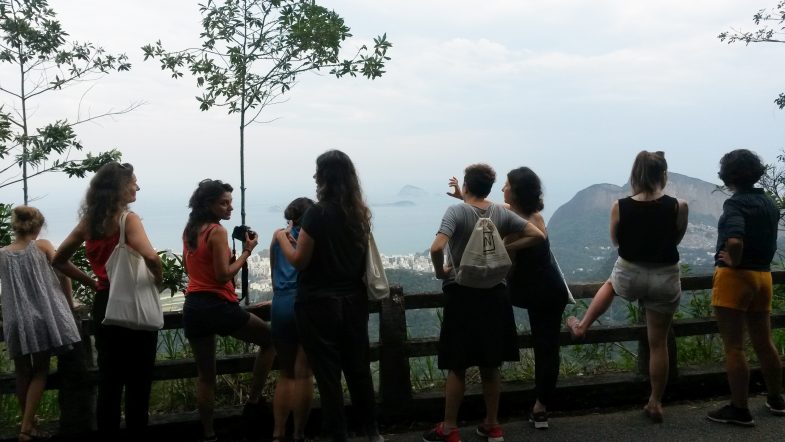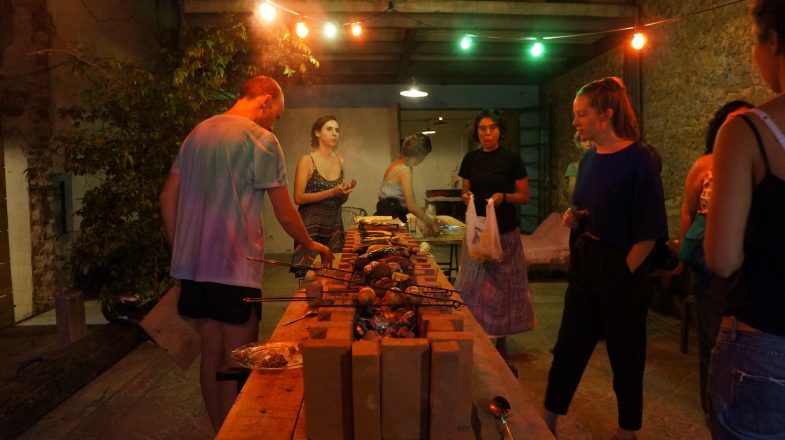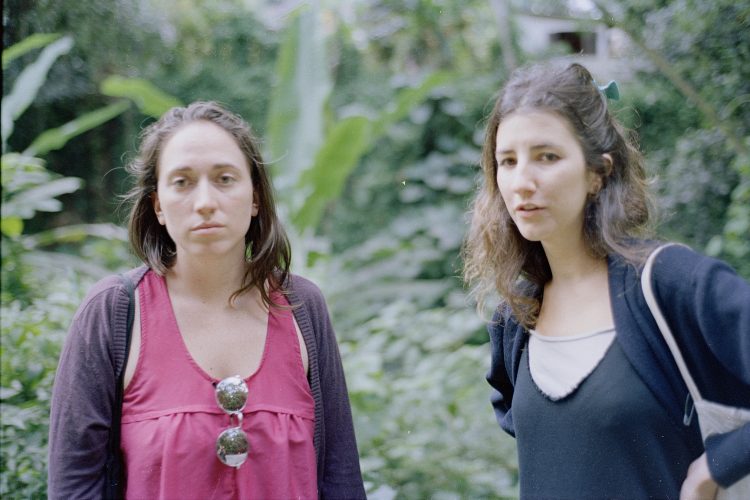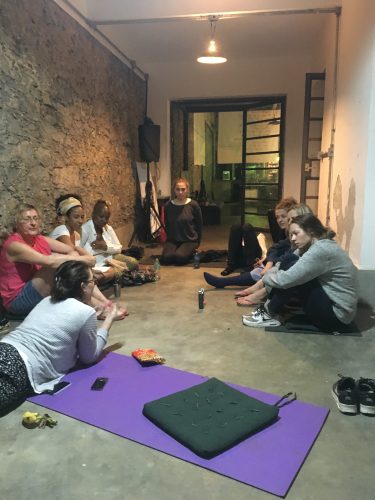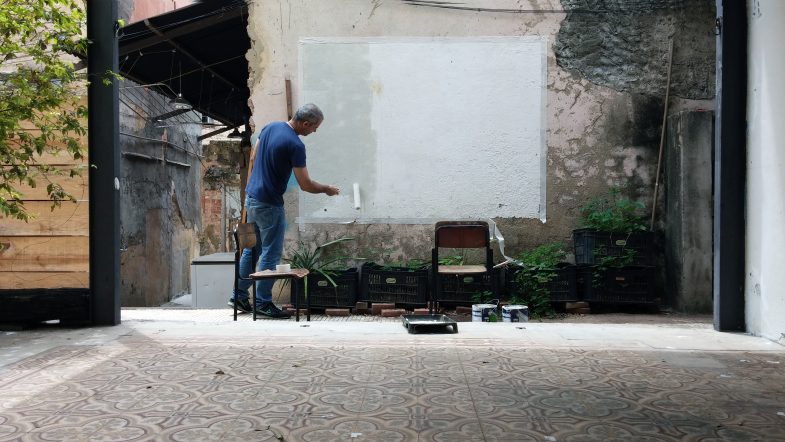Alexandra Baudelot
Co-director of les Laboratoires d’Aubervilliers (Paris northern suburbs) since 2013 with Dora Garcia and Mathilde Villeneuve, Alexandra Baudelot has worked for several years as an exhibition curator, editor and author. In 2009 she created and managed Rosascape, a platform for contemporary creation in Paris that straddles multiple spheres as a private art centre and production unit, exploring the contexts of production and reception of works as well as their mode of display by attending to specific notions such as the question of private, intimate space vs public and political space. The decision to house Rosascape in an architecturally defined space — a private, intimate, theatrical space, playing with a tension between interior and exterior space and the domestic character of its surroundings — rather than in a neutral, ‘white cube’ type of exhibition space, stems from a will to perceptibly shift the relationship to artworks and artistic experiences. A critical awareness of the standardisation of exhibition spaces in the context of globalisation, and thus of the standardised relationship between the artwork and the public, led us to seek and occupy a site and experiential sphere of a different kind — a left-field space — and displace, in this way, our relationship to contemporary art. At Rosascape she curated exhibitions with Katinka Bock, Ulla von Brandenburg, Raymond Gervais, Benoît Maire, Vittorio Santoro, Berger&Berger, and Adrian Dan and produced several artists books. + Since 2013, as co-director of Les Laboratoires d’Aubervilliers, she develops a work with Mathilde Villeneuve and Dora Garcia based on two factors — a laboratory that research, test out and experiment, and the town of Aubervilliers (at the periphery, on the outskirts, a melting pot of industrial workers, and a major site of immigration). The very particular relationship between these elements is the context in which artists-in-residence make and develop their projects. The collegial approach aims to establish collectives that enable new forms of intersubjectivity to take shape. In collaboration with the co-direction team, she works on developing novel communities that alter and transform according to the shifts and developments in their work. From the very beginning, the Laboratoires d’Aubervilliers has been committed to reducing the gap between informed and uninformed audiences, and to supporting the most complex and hybrid artistic practices while ensuring no one feels excluded. The institution is renowned for the collective productions it has generated, for fostering collaborations between artists across the entire spectrum of disciplines, and for its participatory, community-building projects involving local residents. In 2016 she co-curated the event « Performing Opposition » intiated by Les Laboratoires d’Aubervilliers at Capacete (Rio de Janeiro) and Casa do Povo (Sao Paulo). She is the author of the book “Dispositif chorégraphique” (Les Presses du Réel, Nouvelles scènes collection, 2005) on the work of choreographer Jennifer Lacey in collaboration with the scenographer Nadia Lauro, the editor of the monograph “Grimaces du réél” on the choreographer Latifa Laâbissi (Les Presses du Réel, Nouvelles scènes collection, 2015), “Portraits d’Aubervilliers” by Lenio Kaklea with Lou Forster (Les Laboratoires d’Aubervilliers, 2018), “Zarba Lonsa _o_o__o Mesonya/ » an editorial project by Katinka Bock, (MER. Paper Kunsthalle, 2018) In 2016 she curated a serie of three exhibitions with Ulla von Brandenburg at The Power Plant (Toronto), The Darling Foundry (Montreal) and ACCA (Melbourne). -
Mathilde Villeneuve
Latifa LAABISSI
Laura Taves
No CAPACETE, em julho de 2017, apresentou o projeto das Placas de Rua da Maré, e também, o projeto realizado na Nova Holanda, Maré, em 2016: Correspondências Cariocas – o Rio em 450 azulejos, foi um projeto realizado, a partir de uma edital da Secretaria Municipal de Cultura, para a celebração do aniversário de 450 anos da cidade. Maior do que previsto, o painel artístico revestiu uma casa inteira do bairro, com desenhos e textos de 50 crianças e jovens moradores locais, e sua visão do que é a cidade do Rio de Janeiro hoje. As crianças ainda enviaram postais, com seus desenhos e textos, para diversos amigos/parceiros ao redor do planeta. Os cartões já ganharam o mundo, nossa cidade está em toda parte, transcendendo o projeto e a Maré, ampliando sua abrangência territorial, fazendo novas conexões e se perpetuando no tempo.
Desde 2015 é gerente de Desenvolvimento de Público e Relações Comunitárias do Museu do Amanhã, trabalhando diretamente com os moradores da região da Pequena África, na criação de programas e ações que valorizem e que apresentem ao grande público a cultura popular e sofisticada da Matriz Africana local. O projeto Entre Museus, outro exemplo de atuação da área, trabalha com mais de 1.000 jovens de todas as escolas da região, incentivando sua visitação ao Museu do Amanhã e a outros 22 museus parceiros, um convite para entrar nos museus e também para conhecer esse grande museu à céu aberto que é a própria cidade.
Giulia Majolino
Thelma Vilas Boas
Ian Erickson-Kery
[gview file=”http://capacete.org/wp-content/uploads/2016/05/CAPACETE20ANOS-PAGINAS-ian.pdf”]
…
Ian Erickson-Kery is a PhD student at Duke University, where he researches and writes on Latin American art, literature, territorial conflicts, and geographical imaginaries. In recent years he has moved itinerantly between the north and the south, the art world and academia, and the city and the country, all of which shape the topography of his work. With equal fondness for Praça Tiradentes and Vale do Anhangabaú, he is nonpartisan in the Carioca-Paulista rivalry.
Aurélia Defrance
Caetano Maacumba
Soledad Leon
Coordinator of an collective art project called PIA Michelle http://pia-michelle.blogspot.cl/
Also collaborate with CRAC Valparaiso now and then http://www.cracvalparaiso.org/?lang=en
Thora Dolven Balke
Camilla Rocha Campos
[gview file=”http://capacete.org/wp-content/uploads/2016/04/CAPACETE20ANOS-PAGINAS-camilla.pdf”]
….
Artista, pesquisadora, ativista micro-política e auto-revolucionária. Como artista transita no campo de uma arte colaborativa na qual o público é convidado a participar de situações performáticas relacionando seu corpo à contextos poéticos carregados de um tipo de humor e crítica. Em janeiro de 2017 ao integrar o Programa Internacional de residência artística AiR Q21 no Museum Quartier em Viena, Áustria, ministrou o workshop “Silent images shout body policies” no espaço de arte Raum_D do Museum Quartier.
É atualmente diretora da residência artística internacional CAPACETE no Rio de Janeiro onde também par- ticipou do programa como artista em 2016, quando realizou em parceira com a artista e também residente Thora Dolven Balke a pesquisa aberta “Respira Conspira”.
Anna Bak
Anna Bak is a visual artist and curator/organizer. She works in different medias, primarily with installation. She took her Master in Fine Arts from The Funen Arts Academy in Denmark, with an supplementing exchange year with a Fulbright Scholarship, at Montana State University in Bozeman, Montana, USA.
Sojin Chun
Chun’s practice includes creating works in video and installation. Using a whimsical and humorous approach, her work explores local narratives to examine the intersections and contradictions found in cultural, social and personal identities as a result of geographic relocation, and cultural multiplicity. Chun’s personal experience living in the Korean diaspora in Bolivia, and Canada, informs her work which reveals the idiosyncrasies found in culture, in its inconclusive and contradictory nature.
+ Through contemporary art, invited artists shared their work informed by personal research and collected images, news items, and raw materials, which expand beyond traditional notions of archives and institutionalized documents that are categorized by hegemonic political powers. At Capacete, we brought together artists from Chile, Costa Rica, Argentina, Canada, and Brazil in dialogue by sharing their individual projects looking at the ways in which artists subvert or give new meanings to the colonial construction of history. Through personal or historical imagery, artists told alternate histories from the perspective of those that are often unaccounted for in mainstream versions of history. This first event Arquivos de Resistencia took the form of a week-long residency for invited artists, a video screening of their works as well as artist talks and group dynamic activities. The group was further expanded through the participation of representatives from an activist group from the community of Horto whom invited the group for a tour of this community facing eviction and rapid gentrification of bicentenial residents, workers of the city’s Botanical Gardens. Participating artists in this project were: Marton Robinson (Costa Rica) who gave an in-depth historical context of Limon, Costa Rica in line with the narrative of Jamaican-descendents who were brought to Costa Rica as labourers and the rise of Marcus Garvey’s activism; Araya-Carrion, a Chilean collective that works with material archives to demonstrate the layers within the history of Colonization of Indigenous populations in the south of Chile; Cecilia Estalles, a queer Argentian artist who has been digitizing the first Trans archives collecting stories of Trans women who faced police brutality in the 1980s; and Canadian artist Joyce Wieland’s work that showed solidarity for left leaning artists and political activists. These artists were brought together by Capacete resident artist soJin Chun. Other residents that collaborated in this project were, Kadija de Paula, Ian Erickson-Kery, and Soledad Leon. -
Kadija de Paula
After fleeing the second English empire of the North Kadija traveled the former Spanish South until a warm autumn afternoon when she arrived in the land of the rising sun. Still in the transfer bus from Narita to Shibuya she met a man wearing a helmet. They talked about Eastern Europe and Latin America and discovered they were neighbors in Rio. Back in the tropics she went to his house for Universidade de Verão where she met the other 12 who later became the 13 of Pereira, also known as Agência Transitiva. Under the maracujá tree they evoked Mané Pelado, Cara de Cavalo and became epiphyte to the helmet hanging in the bookshop of Pequeno Laboratório. She started going by Agent Orange and made crosswords with Vocabulário Político para Processos Estéticos. In the kitchen she made merendas and oferendas: tamales for Portas, bolinho de Feijoada e Feminismo with Andrea, kimchi with soJin, and Queer Vegan Manifesto with Asia. When the helmet was not there she took over the house with the others from Capacetando and started making her PFs. Then came the coup and the new ones, hungry and thirsty for wednesday nights. She became resident chef. Then there was Futuros Sequestrados vs. Anti-sequestros dos Sonhos; DUB Janta E NOIS E Juice; Oficinas de Ajeum; Transburger; Nabo Laser; Opposite Kitchen; Confraria do Mungunzá; Daal do Sadhu Amar Bharati; Respira Lanches; Engastração Vegana; and much more… One day she had to move to another place, but she wouldn’t be where she is now if it wasn’t for that helmet.
Tali Serruya
Trained at the National Conservatory of Dramatic Art in the city of Paris and at the Geneva School of Art and Design, I thwart the codes of classical dramaturgy to create performative forms that question the plasticity of performance .
Currently is doing a two year residency (2017-2019) at Hangar in Barcelona (SP) https://hangar.org .Also is working for the Centre Dramatique National de Besançon, Université de Franche-Comté and at La Comédie de Reims.
Jonas Lund
Jonas Lund is a Swedish artist that creates paintings, sculpture, photography, websites and performances that critically reflects on contemporary networked systems and power structures of control.
Julia Retz
Pick Nick
Pick nick is an artist group based in Cyprus and initiated in 2012 by Alkis Hadjiandreou, Panayiotis Michael, Maria Petrides. pick nick brings together various means and practices of research to set up artworks and projects often in collaboration with fellow artists, writers, curators.
Daniela Mattos
Artist, educator and curator, currently teaching at UFRJ.
“O Capacete tem sido um espaço fundamental de produção artística, encontros e pesquisas no Rio de Janeiro, atuando de forma independente e também em parceria com instituições locais. Tive a chance e a felicidade de participar e colaborar com atividades do Capa em diferentes projetos e momentos, listo aqui alguns deles: como integrante do grupo Máquina de Escrever (RJ), como propositora do workshop O artista como curador (RJ), como artista convidada do evento Feminismo e Feijoada (RJ) e como integrante do grupo Máquina de Escrever (SP) que culminou com a publicação Livro para Responder. Além disso, assisti a inúmeras palestras, tive encontros, conversas, celebrações e também fiz amigas e amigos entre os artistas, curadores e pesquisadores residentes que participaram desses 20 anos de atuação. Espero que essa iniciativa se mantenha viva e atuante, oxigenando as estruturas formais e não-formais do circuito de arte carioca, brasileiro e internacional.”
Tanja Baudoin
[gview file=”http://capacete.org/wp-content/uploads/2018/11/CAPACETE20ANOS-PAGINAS-tanja.pdf”]
….
Tatiana Roque
[gview file=”http://capacete.org/wp-content/uploads/2016/05/livro-para-ler-2010PORT-roque.pdf”]
….
Tatiana Roque nasceu no Rio de Janeiro, tem 38 anos, é professora do Instituto de Matemática da UFRJ, doutora em História e Filosofia da Ciência, foi pesquisadora do Collège International de Philosophie, em Paris, entre 2001 e 2007, e integrante da bateria do Bloco das Carmelitas, em Santa Teresa.
